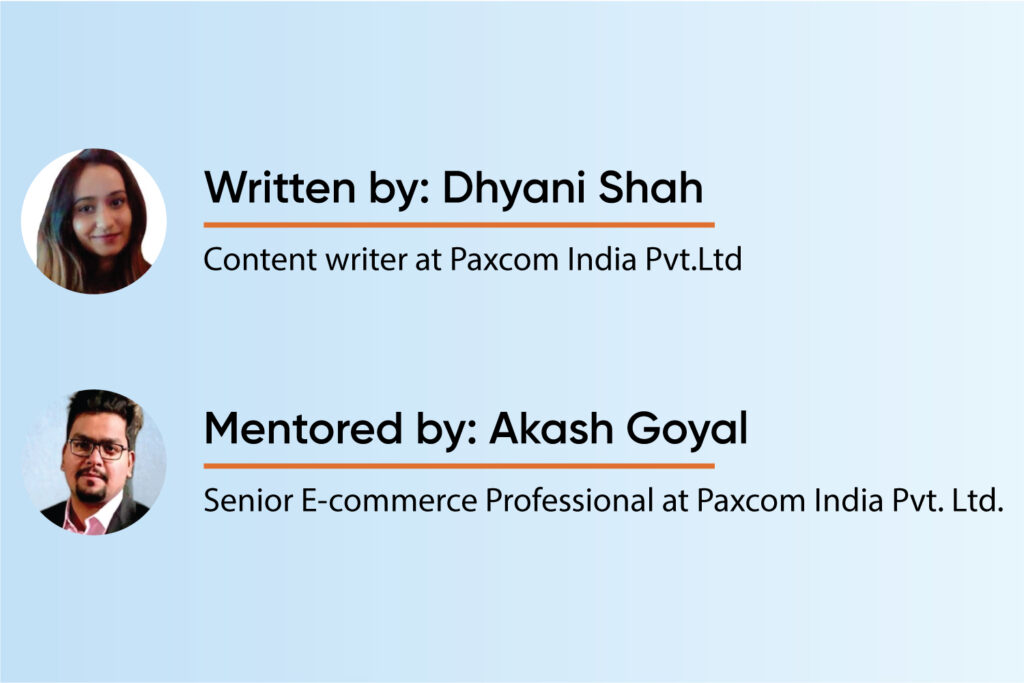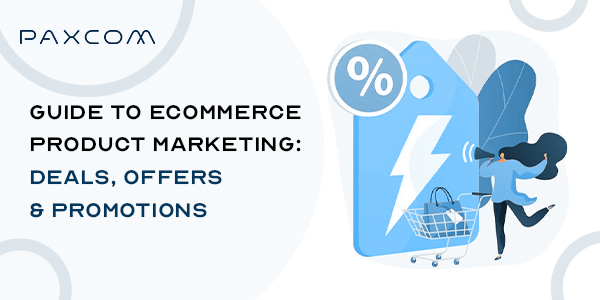How can you craft the perfect funnel to market your products? Doesn’t this question weigh heavily on your mind? We’re here to help. We will explore various eCommerce product marketing techniques covering attractive coupons and promotional offers that shoppers will find irresistible. Because let’s be honest, who could blame them? They make the shopping experience more fun and enjoyable.
Promotional offers & discounts get the highest return on investment when they work in unison with the right eCommerce product marketing strategy that will help you build a strong relationship with your customers and increase your sales conversion rate.

This is why we decided to give you a sneak peek into the most effective promotional strategies that help eCommerce brands boost sales and differentiate their products in the ever more crowded marketplace.
Table of Contents
Different eCommerce product marketing strategies
With today’s short-attention-span world, new promotional techniques have become necessary to attract today’s digitally savvy bargain hunters. So, let’s delve into those strategies.
1. How do you market your products with coupons?

(a) Signup Coupons
When a customer lands on your store/site, they may only be browsing your catalog but might not be ready to make a purchase yet. A signup coupon is the first step in building momentum on the buying journey. A few examples of coupons are 10% off the first order, free credits, free shipping on the first purchase. As a result, you can now contact those who have signed up but have not yet ordered.
(b) Mobile coupons
Some eCommerce platforms include mobile applications into their operations, such as single-use mobile coupons, to make this coupon more lucrative. These mobile-only coupons are gaining a lot of traction because of the rise in smartphone users.
(c) Coupon Codes
Coupon codes are a proven marketing strategy that encourages consumers to buy more frequently. It provides a discount on the original price of the product, which is why customers love them! A coupon code can be implemented in a number of ways. There are coupon codes, referral coupons, and promo codes, each designed for a different purpose. These codes consist of a combination of brand-unique numbers and letters.
(i) Coupon Codes for Repeat Purchases
Whenever customers buy a product, there are high chances that they may need the same product in the near future. As an example, you might give them a coupon for 10% off their next purchase after they make a purchase, even if the product is different. By doing so, you will increase your customer lifetime value.
(ii) Coupon Codes for Influencer Marketing Campaigns
Influencer coupons are promotional offers that some brands partner with the chosen famous persona on social media to increase their exposure by providing exclusive codes through influencers’ networks to convert fans into customers.
The unique code of the coupons allows brands to track the performance of coupons to measure the program’s effectiveness to help you make sound decisions for further promotional strategies.
(iii) Abandon Cart Discounts
We all are aware of how customers abandon carts due to multiple reasons: no free shipping, no easy checkout, or offer. If a visitor hasn’t completed their purchase, you can use an eCommerce product marketing strategy to send a notification. Additionally, you can encourage them to return to complete the checkout process by including a valuable offer with a notification.
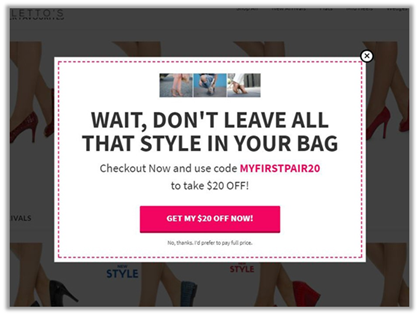
2. Why Offer Free Shipping?
Shopping is fueled by the word “free,” which is why free offers perform so well almost every time. Retailers mostly use two different types of free offers: free shipping and free returns. Depending on what you sell, your business’s bottom line might benefit more from one or the other strategy.
How can you offer free shipping to your customers without a loss for you?
In most cases, consumers are offered free shipping as well as additional delivery options included with their orders, such as overnight express delivery at a cost. Additionally, you can offer free shipping over a certain number of purchases. Several eCommerce platforms provide free shipping (such as Myntra, Ajio), or you can offer both at a time. This is ideal for boosting sales during periodic slow-downs or providing further incentives during periods of high competition.
3. Use Flash Sales to create urgency
There are many eCommerce product marketing ideas that you have seen, including flash sales! Flash sales are an excellent way to create a sense of urgency and FOMO (fear of missing out). By making use of flash sales, you will reach bargain hunters and clear surplus inventory, get new customers to test you, entice loyal customers, and target those who have already visited your website.
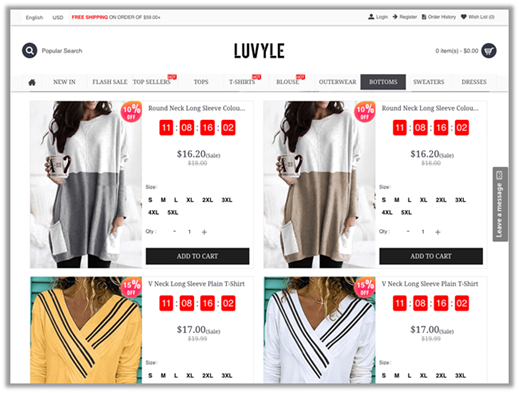
A study by Monetate found that 56% of business owners believed flash sale campaigns outperformed regular promotion campaigns. Don’t blend in with your competitors and get creative with your flash campaigns-
(i) Registration flash sales
Consider registering for a flash sale in order to predict demand and ensure there is enough inventory and server power to handle the influx. In this case, you’ll be able to get an idea of peak load capacity and the amount of inventory you may need.
(ii) VIP flash Sales/ Exclusive Access Flash Sale
Inspire curiosity by implying that a surprise item will be included in the sale for previously registered customers. Or promise a first look or sneak peek to create exclusivity shortly before the sale. You’ll also be better positioned to gauge demand. You’ll also encourage non-shopping prospects to visit your site before buying. This gives you valuable information about which products users like best and can help you choose which items to hide. The data allows for retargeting long after the sale.
4. Deals & Offers on Amazon – Are They Worth the Hype?
(a) Lightning Deals
Lightning Deals are Amazon promotions that last only a short period of time for each product. This phenomenon keeps customers interested in the site. Amazon users enjoy returning to the Lightning Deals section because the products are constantly changing. Consequently, many people gravitate towards Amazon sellers.
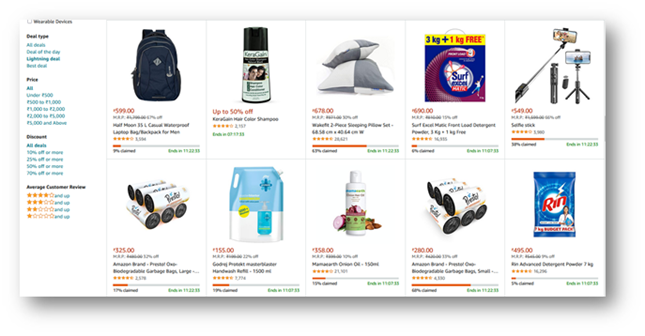
Amazon Lightning Deals are only accessible to registered sellers. You can visit the Lightning Deals Dashboard in your seller account to see which products are eligible for Lightning Deals.
In a survey by Amazon inside, it was found that the product saw a 68% boost in sales during the lightning deals. Not only does it improve the sales for the day, but it can improve the sales for up to the subsequent recurring week, which makes running this sweet deal almost worth it.
You must fulfill specific criteria: your product should have three or more ratings, and you must be prime eligible via FBA or FBM to partake in lightning deals.
(b) Amazon Deal of the Day
Deals of the Day on Amazon are specific items or sets of related items that have a price cut for a limited time. You will see them at the top of Deals for the entire day during which they run, and they will be identified with a badge visibly displayed on the page. It helps in increasing brand visibility, sales and drives a high volume of traffic to the product listing.
To qualify for Deal of the Day, you must be prime eligible, and your product rating should be three or higher.
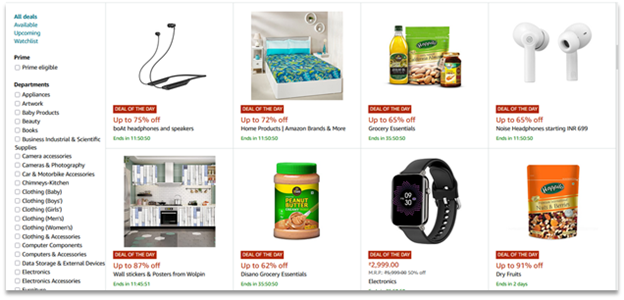
(c) Amazon Subscribe and Save Feature
With Subscribe & Save, Amazon customers can get regular shipments of products they use frequently. You can offer certain discounts, which usually start at 5-10% for your subscribers, or free shipping on subscribe and save orders.
This feature has the potential to increase a seller’s overall sales by 10-30%, along with reducing customer acquisition costs. However, there are some eligibility criteria that you must fulfill, such as your FBA status should be active, product rating should be above 3.8, and the products you list should fall under any of these categories: Health & Personal Care, Beauty, Office Products, Baby, Electronics, Grocery & Gourmet Foods, Home & Kitchen, Pet Supplies, Sports Fitness & Outdoors, Car, Motorbike Accessories, Personal care appliances & Lawn and Garden.
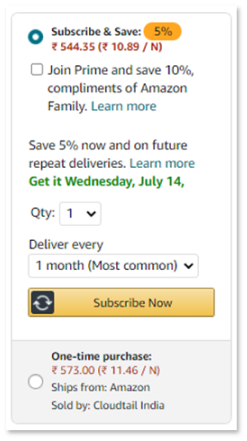
5. Go big with BOGOs!
Promotions needn’t be based on a particular savings figure. It can also offer customers other bonuses. The BOGO (Buy One, Get One) promotion is extremely popular for eCommerce product marketing and is best used when a customer wants more than one particular product. BOGOs can be flexible in that the customer may need to buy more than one or may receive more than one for free, or both? So, you could actually set up a “Buy Three, Get Two at Flat 20% off” promotion.

A buy-one-get-one-free deal doesn’t even have to include the same product. The most common example is a shampoo with conditioner or face oil with massage rollers. Like them, you can come up with similar deals that give the customer a free product depending on your product uniqueness.
BOGO Benefits
- Up-sell & cross-sell opportunities by increasing the units per order
- Drive growth with low investment. Customers receive a discount when they purchase these promotional products.
- Free visibility in the BxGy Store and a dedicated landing page at the vendor/seller level.
- It helps increase the average order value & basket size, which allows brands to push bigger bundle offers for their customers.
6. Take Advantage of Festive Events with Seasonal Deals
New seasonal products are easy for fashion merchants to capitalize on every few months. How does that work if you sell stationery, modular furniture, or anything else that isn’t easily marketed seasonally? You can still take advantage of seasonal promotions because you don’t have a product category that changes every time the weather changes.
You can still embrace seasonal hype, leverage the immediacy and relevance of calendar-related events, even if your product is the same 24/7/365. You, too, can have a little fun (and boost sales) with Amazon Prime Day, Flipkart’s Big billion Days. S.E. A’s 9.9/11.11 sales and many more.
Depending on the products you choose and the campaign theme, you can offer discounts a little higher than the usual business days throughout the event or on the day you expect increased traffic to attract both existing and new customers.
Closing Thoughts
Promoting your eCommerce products with discounts and other offers isn’t a new eCommerce marketing strategy by any stretch of the imagination. But it is still as effective as ever.
Only customized eCommerce campaigns will work if geared both toward your audience’s expectations and your overall business goals.
At Paxcom, we have a team of advertising strategists to assist you in planning, executing, and auditing promotional strategies that are aligned with your brand’s goals and budget. In addition, our team keeps a close eye on trends, best practices, and competition activities to find new business opportunities within the relevant category and help build event calendars for planning promotions and for mapping opportunities.
To market your product in the array of competition, having a solid eCommerce marketing plan can take you a long way toward success and sales.
